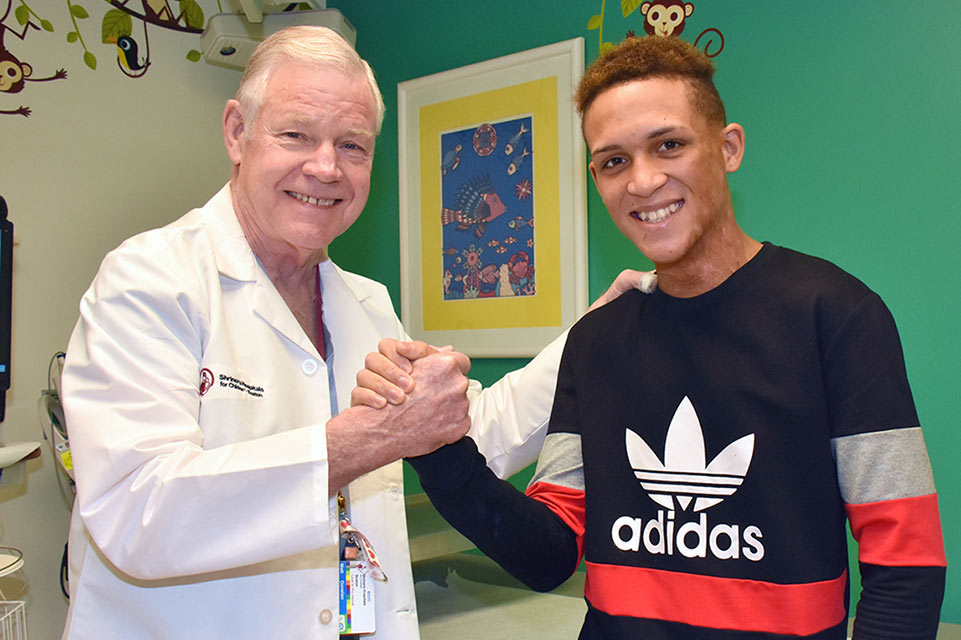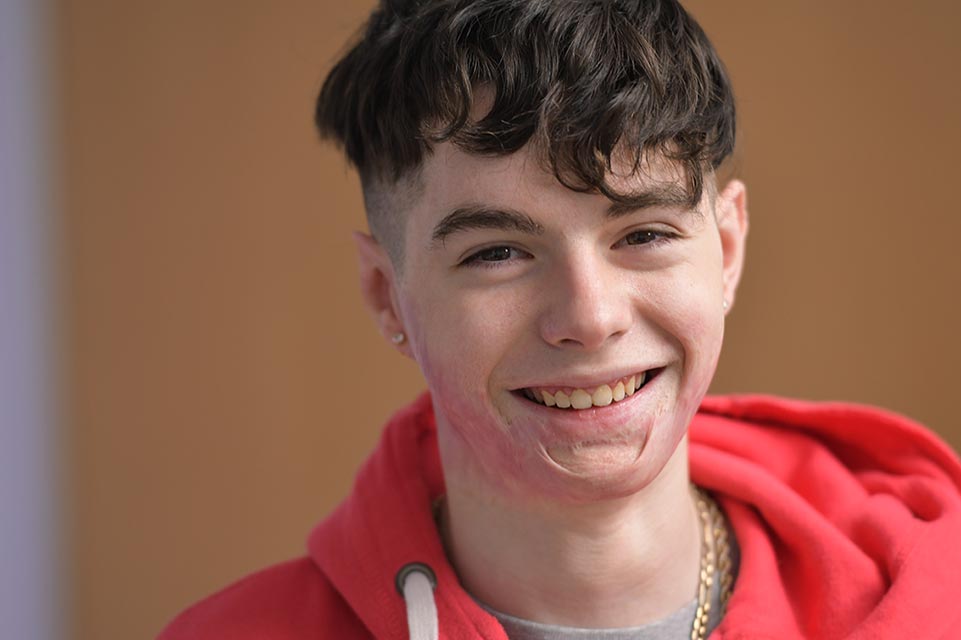Shriners Children’s Is Advancing Care and Healing for Children With Burns Using Skin Grafting
What is skin grafting?
Skin grafting is a highly-effective treatment for children with burn injuries. By quickly closing acute wounds, skin graft surgery helps regulate body temperature, prevent infection and maintain proper body fluid balance. Grafts from donors are used as a biomedical bandage and are replaced about every two weeks until the child's own tissue is ready to accept permanent grafts. These permanent grafts are taken from an area of the child’s body that has not been burned, typically using a split-thickness skin graft procedure.
Since the skin serves as a natural barrier to infection, skin grafts for burns are crucial to protecting children from life-threatening bacteria and germs that could complicate their recovery. The earlier a child receives skin graft surgery after a serious burn, the better their outcome will be.
Specific treatments and services may vary by location. Please contact a specific location for more information.
Learn About Skin Grafting
What is a skin graft? A skin graft involves transferring healthy skin to a damaged area to accelerate the healing process and reduce the risk of infection. Donor skin is used temporarily until the child is ready to receive their own skin graft.
There are different types of skin grafting procedures, depending on the size and severity of the burn. Each plays an important role in burn recovery.
Types of Skin Grafting
For burns covering a large surface area, donor skin is often required to temporarily protect the wound until the child’s body is ready to accept a skin graft for burns from their own healthy skin.
Donor Skin
Stored in our tissue bank, donor grafts are applied in strips to the wounded area. When there is not enough healthy skin available for grafting, a mesh skin graft may be used. This technique allows for greater coverage, although the mesh pattern may remain visible on the skin throughout the child’s life.
Sheet Grafting
This is the ideal method of covering burn wounds. A sheet of grafting skin is taken from an unburned area of the child’s body and transferred to the burn site. Sheet grafts are known for their durability, lower risk of wound contraction, and more natural appearance compared to other types of grafts.
Autografting
In this process, healthy skin from your child’s own body is used to cover the burned area. Though the donor site may be painful, it generally heals within 10-14 days, similar to a superficial second-degree burn.
Amniotic Membrane Grafts
Given their natural healing properties, grafts using amniotic membrane that is donated by new mothers post-birth are extremely helpful with treating facial burns and burns affecting the eyes.
Shalom spent months in the pediatric intensive care unit while he underwent surgeries and skin grafting to bring back mobility. I offer many thanks to Shriners Children's and their incredible mission.

Shriners Children's Tissue Bank Ensures Supply in Times of Crisis
Conditions We Treat
View All Related Conditions
Chemical Burns

Electrical Burns

Flame Burn

Scalds

Second-Degree Burns

Third-Degree Burns

Fourth-Degree Burns


